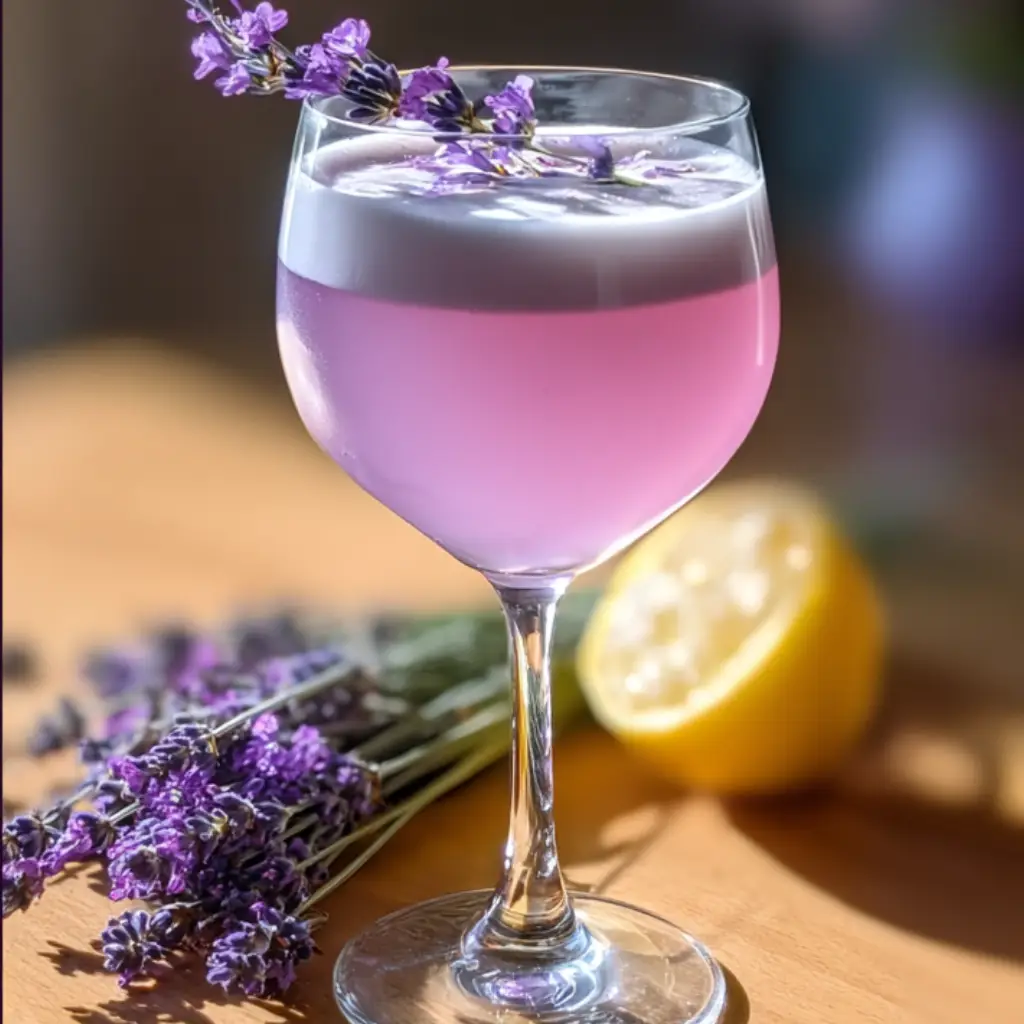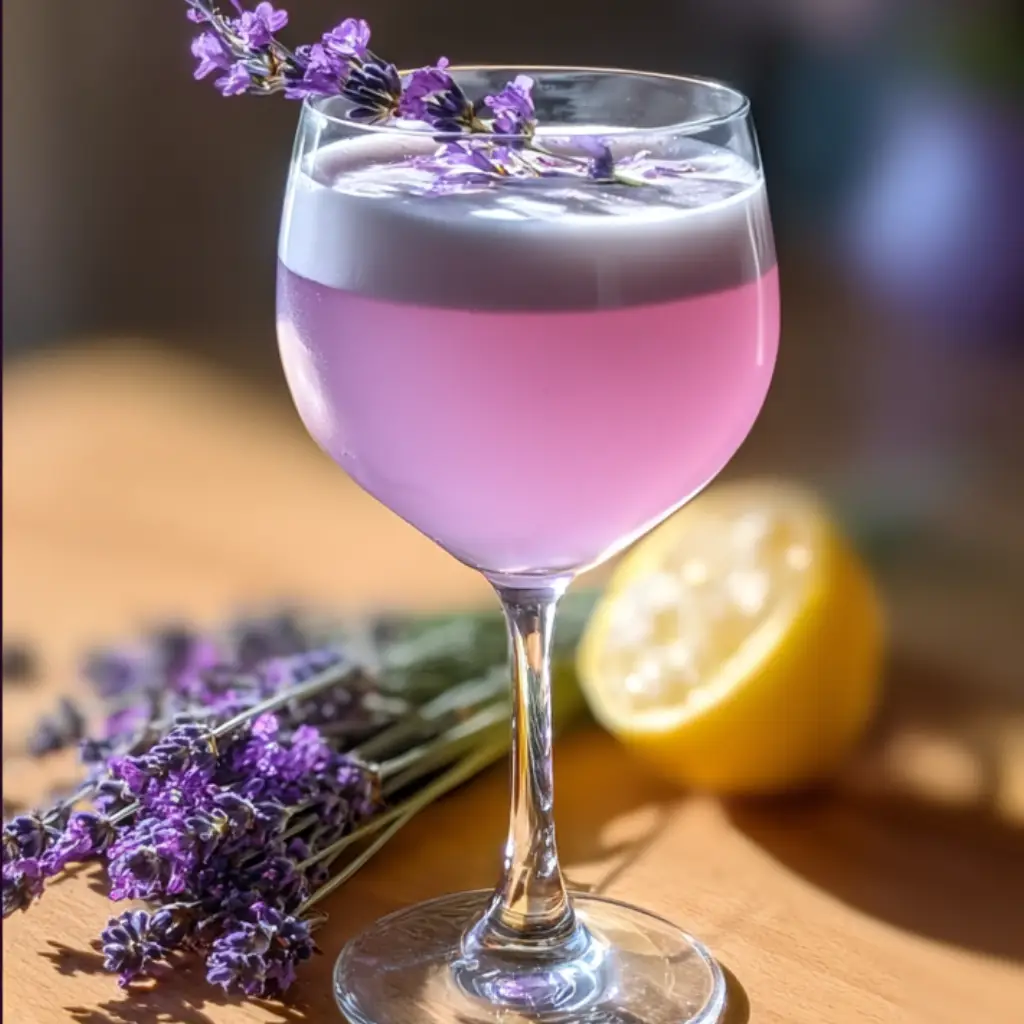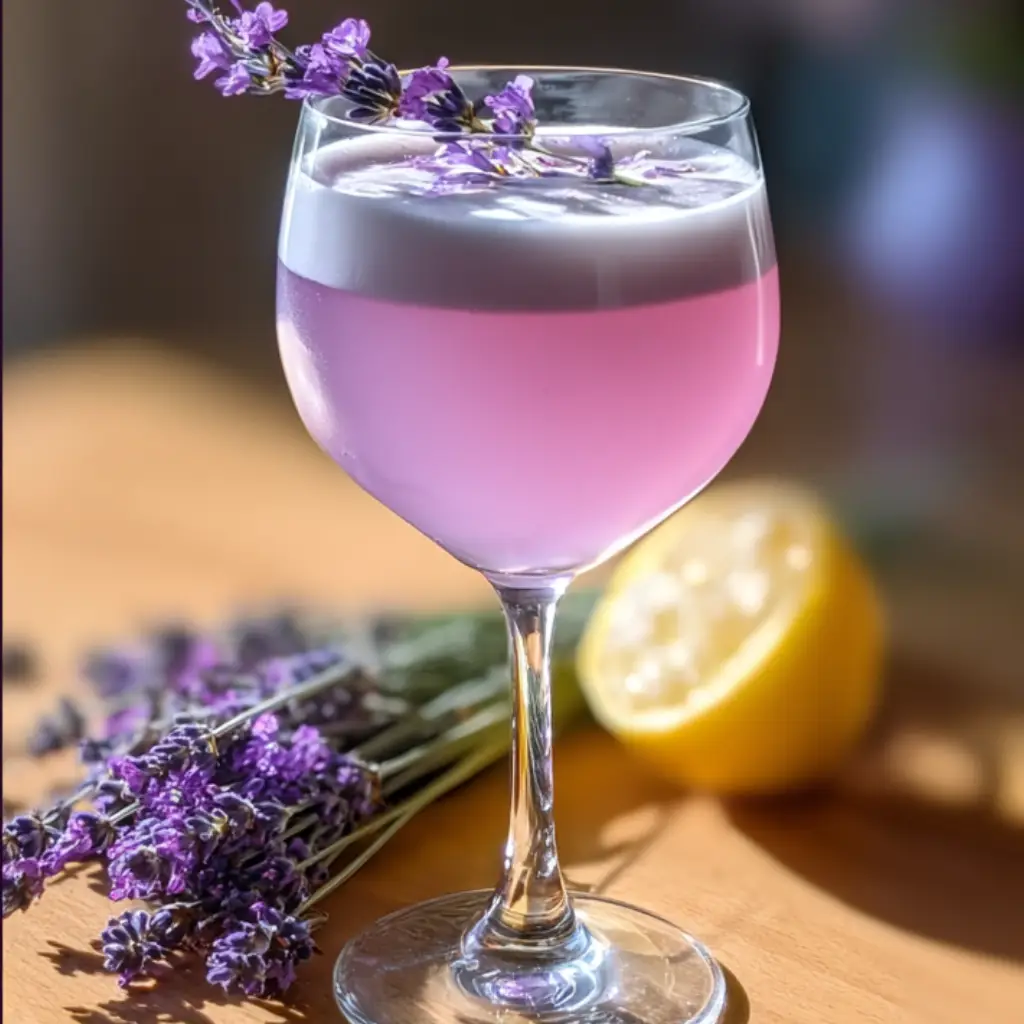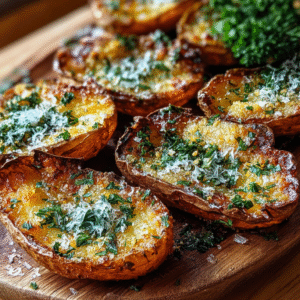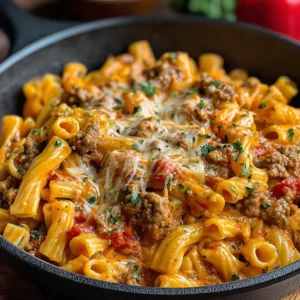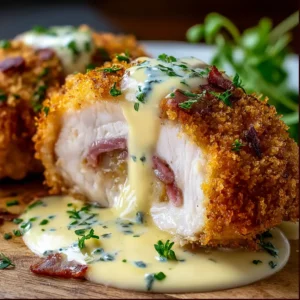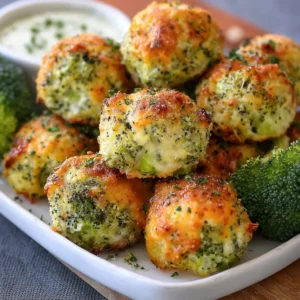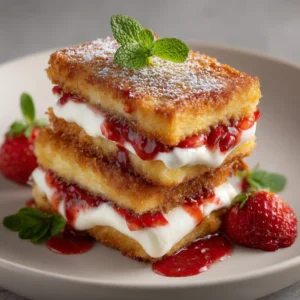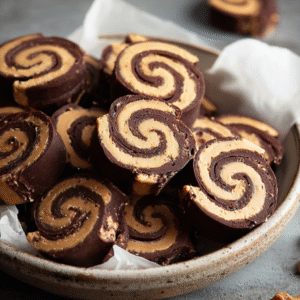| Prep Time: 10 minutes | Cook Time: 5 minutes | Total Time: 45 minutes | Serves: 1 |
|---|
Why Lavender Gin Sour Deserves Your Cocktail Repertoire
The lavender gin sour stands as a testament to the transformative power of thoughtful ingredient selection because this elegant cocktail demonstrates how a single botanical addition can completely reimagine a classic recipe while preserving the structural integrity that makes gin sours so beloved among cocktail enthusiasts. Unlike aggressive flavor modifications that overwhelm the base spirit, lavender provides subtle complexity that enhances rather than masks the gin’s botanical character because the herb’s natural affinity for juniper and citrus creates harmonious flavor relationships that feel both sophisticated and approachable.
The visual appeal of a lavender gin sour cannot be understated because the drink’s ethereal appearance creates immediate anticipation and sets the stage for the sensory journey that follows. When crafted with color-changing gins like Empress 1908, the cocktail transforms from deep indigo to soft purple as the citric acid interacts with butterfly pea flowers because this dramatic color shift provides entertainment value that makes the drink perfect for special occasions and memorable gatherings.
The aromatic component of this cocktail deserves particular recognition because the lavender’s fragrance begins the drinking experience before the liquid touches your lips, creating a multi-sensory engagement that distinguishes exceptional cocktails from merely good ones. The gentle floral notes provide a sophisticated introduction to the complex flavor profile that unfolds with each sip because the herb’s natural compounds complement rather than compete with the gin’s existing botanical elements.
Understanding the seasonal versatility of lavender gin sours reveals another compelling reason to master this recipe because while lavender is often associated with spring and summer, this cocktail’s refined character makes it equally appropriate for autumn and winter occasions when served alongside appropriate garnishes and in proper glassware that emphasizes its elegant nature.
Essential Ingredients for Perfect Lavender Gin Sours
Creating exceptional lavender gin sours requires careful attention to ingredient quality and selection because each component plays a crucial role in achieving the delicate balance that makes this cocktail so memorable and rewarding to prepare.
Premium Gin – 2 ounces of high-quality gin provides the essential foundation because the spirit’s botanical complexity must harmonize with the lavender without being overwhelmed, making London Dry gins or floral-forward gins like Hendrick’s ideal choices that complement rather than compete with the lavender’s delicate character.
Fresh Lemon Juice – 3/4 ounce of freshly squeezed lemon juice delivers the necessary acidity that brightens the entire cocktail because bottled citrus juice lacks the vibrant oils and fresh flavor compounds that create the proper tartness required to balance the lavender’s sweetness and the gin’s botanical intensity.
Lavender Simple Syrup – 3/4 ounce of homemade lavender-infused simple syrup brings the cocktail’s signature floral character because this custom ingredient allows precise control over the lavender intensity while providing the sweetness needed to balance the citrus acidity and create the smooth mouthfeel that defines quality sours.
Egg White – One fresh egg white creates the luxurious foam that transforms this cocktail from good to exceptional because the protein provides the silky texture and visual appeal that elevates the drinking experience while helping to integrate all flavors into a cohesive, restaurant-quality presentation.
Culinary Lavender Buds – 1 tablespoon of food-grade dried lavender buds for syrup preparation ensures authentic flavor because using non-culinary lavender can result in soapy or overpowering tastes that ruin the delicate balance this cocktail requires for success.
Granulated Sugar – 1/2 cup of pure cane sugar combined with equal parts water creates the simple syrup base because quality sugar dissolves cleanly and provides neutral sweetness that allows the lavender’s floral notes to shine without interference from artificial flavors or additives.
Fresh Lavender Sprigs – Optional garnish elements that provide aromatic enhancement and visual appeal because fresh lavender releases additional fragrance when gently bruised, creating an immersive sensory experience that begins before the first sip and continues throughout the drinking experience.
The Art of Creating Perfect Lavender Gin Sours
Mastering the lavender gin sour requires understanding the delicate interplay between technique, timing, and temperature because this sophisticated cocktail demands attention to detail that separates amateur attempts from professional-quality results that rival those found in high-end cocktail establishments.
The foundation of exceptional lavender gin sours begins with proper syrup preparation because the lavender infusion process determines whether the final cocktail achieves subtle sophistication or overwhelming floral intensity that masks the other carefully balanced elements. Temperature control during syrup creation becomes crucial because overheating can extract bitter compounds from the lavender while insufficient heat fails to release the essential oils that provide the desired aromatic character.
Understanding the egg white technique separates novice bartenders from skilled mixologists because proper emulsification requires specific shaking patterns and timing that create the signature foam without incorporating excessive air that results in unstable texture. The dry shake method, performed without ice, allows proteins to properly bind and create stable foam before the dilution and chilling that occurs during the wet shake phase.
Glassware selection influences both temperature retention and aromatic concentration because the proper vessel enhances the drinking experience by directing lavender fragrance toward the nose while maintaining optimal serving temperature throughout the consumption period. Chilled glassware becomes essential because room temperature glasses immediately begin warming the cocktail and dissipating the delicate aromatic compounds that make this drink so special.
The timing of service plays a critical role because lavender gin sours reach peak flavor and texture immediately after preparation, and delays allow the foam to dissipate and the carefully balanced flavors to separate or become muted through oxidation and temperature changes.
Step-by-Step Instructions for Lavender Gin Sour Mastery
Follow these detailed instructions to create lavender gin sours that showcase professional technique and deliver consistent results because proper methodology ensures that every cocktail meets the high standards this sophisticated drink deserves.
Step 1: Prepare Lavender Simple Syrup Begin by combining 1/2 cup water, 1/2 cup granulated sugar, and 1 tablespoon culinary lavender buds in a small saucepan over medium heat, stirring gently until the sugar completely dissolves because rushing this process can result in grainy texture or uneven lavender distribution. Bring the mixture to a gentle boil, then immediately remove from heat and allow to steep for 30 minutes because extended steeping extracts bitter compounds that can overpower the delicate floral character you want to achieve.
Professional Tip: Gently crush the lavender buds between your fingers before adding them to the syrup because this releases more essential oils and creates fuller flavor development during the relatively brief steeping period.
Key Points: The syrup should be completely cooled before use in cocktails because hot syrup will melt ice too quickly and create improper dilution that affects both flavor balance and texture, and proper straining removes all plant material that could create unpleasant mouthfeel.
Step 2: Chill Your Glassware Place your coupe or cocktail glass in the freezer for at least 15 minutes before service because properly chilled glassware maintains optimal serving temperature and prevents rapid warming that diminishes the cocktail’s refreshing character. The cold glass surface also helps preserve the delicate foam structure that provides both visual appeal and textural enhancement throughout the drinking experience.
Professional Tip: If freezer space is limited, fill glasses with ice water while preparing other components because this alternative chilling method achieves similar results and can be completed during the cocktail preparation process.
Key Points: Condensation on the outside of the glass indicates proper chilling, and dry glasses before serving to prevent water dilution that affects the carefully balanced flavor profile you’ve worked to achieve.
Step 3: Measure and Combine Ingredients Add 2 ounces gin, 3/4 ounce fresh lemon juice, 3/4 ounce cooled lavender simple syrup, and 1 egg white to your cocktail shaker because precise measurement ensures consistent results and proper flavor balance that makes this cocktail so appealing. The order of addition doesn’t significantly impact the final result, but adding egg white last helps prevent premature foaming that can interfere with proper measurement.
Professional Tip: Use a jigger or other precise measuring tool rather than estimating because small variations in ingredient ratios can dramatically affect the final flavor balance and overall cocktail quality.
Key Points: Fresh egg white creates better foam than older eggs, and room temperature eggs emulsify more easily than cold ones, so remove eggs from refrigeration 15-20 minutes before use for optimal results.
Step 4: Perform the Dry Shake Seal your shaker and shake vigorously for 15 seconds without ice because this dry shake technique allows the egg white to properly emulsify and begin foam formation without the dilution and temperature change that ice introduces. The vigorous agitation creates the protein structure necessary for stable foam that will persist throughout the drinking experience.
Professional Tip: Listen to the sound during shaking because properly emulsifying egg white creates a distinctive thick, muffled sound that indicates successful protein binding and foam development.
Key Points: Inadequate dry shaking results in poor foam development, while excessive shaking can create unstable foam that dissipates quickly, so aim for consistent, vigorous motion throughout the 15-second period.
Step 5: Add Ice and Wet Shake Add fresh ice to your shaker and shake vigorously for another 10-15 seconds because this wet shake phase chills the cocktail to proper serving temperature while adding the minimal dilution that mellows the alcohol and integrates all flavors into a harmonious blend. The ice also helps further develop the foam structure while achieving the ideal serving temperature.
Professional Tip: Use large, dense ice cubes when possible because they provide efficient chilling with minimal dilution, and avoid small or crushed ice that creates excessive water content and weakens the cocktail’s intensity.
Key Points: The shaker should become noticeably cold to the touch during this phase, indicating proper temperature reduction, and proper technique creates a cocktail that maintains its temperature and flavor integrity throughout the drinking experience.
Step 6: Double Strain and Serve Use both a Hawthorne strainer and fine mesh strainer to pour the cocktail into your chilled glass because double straining removes ice chips and any small particles that could affect the smooth texture that makes this cocktail so appealing. Pour steadily to maintain the foam structure and create an attractive presentation that showcases the cocktail’s elegant character.
Professional Tip: Pour from a moderate height to help preserve foam structure while ensuring complete liquid transfer, and avoid splashing that can disturb the delicate foam layer you’ve worked to create.
Key Points: Garnish immediately with a fresh lavender sprig or lemon twist to enhance both aroma and visual appeal, and serve promptly to ensure guests experience the cocktail at peak flavor and temperature.
Professional Tips for Lavender Gin Sour Excellence
Elevating your lavender gin sour preparation from amateur to professional quality requires understanding advanced techniques and subtle refinements that distinguish exceptional cocktails from merely acceptable ones because these details create memorable drinking experiences that reflect true craftsmanship and attention to quality.
Ingredient temperature management extends beyond simple chilling because coordinating the thermal properties of all components creates optimal conditions for proper mixing and final presentation. Store gin and lemon juice at refrigerator temperature because pre-chilled ingredients require less ice dilution to achieve proper serving temperature, while lavender syrup should be completely cooled but not ice-cold to maintain proper viscosity during mixing.
Quality control testing becomes essential when preparing multiple cocktails because tasting your lavender syrup before each use ensures consistent flavor intensity and allows for minor adjustments that accommodate variations in lavender potency or personal preference changes. Keep backup lavender syrup with slightly different concentrations to fine-tune individual drinks without starting the entire preparation process.
Foam stability techniques separate professional bartenders from home enthusiasts because understanding egg white behavior allows you to create consistently beautiful presentations that maintain their appeal throughout the drinking experience. Add a single drop of lemon juice to the egg white before shaking because the acid helps stabilize proteins and creates longer-lasting foam that withstands temperature changes and handling.
Garnish preparation requires attention to timing and technique because aromatic elements like fresh lavender sprigs release their fragrance most effectively when handled just before service. Gently bruise lavender stems between your fingers to release oils, and position garnishes to direct aromatics toward the drinker’s nose for maximum sensory impact.
Creative Variations to Explore
The versatility of the lavender gin sour framework allows for numerous creative adaptations that maintain the cocktail’s essential character while incorporating seasonal ingredients or personal preferences because experimentation within established parameters often yields exciting discoveries that expand your cocktail repertoire.
Lavender Elderflower Gin Sour incorporates 1/4 ounce elderflower liqueur alongside the lavender syrup because these complementary floral elements create layers of botanical complexity that appeal to guests who enjoy sophisticated flavor profiles. The elderflower adds subtle sweetness and additional aromatic depth without overwhelming the lavender’s distinctive character, creating a spring-like drinking experience that feels both familiar and novel.
Honey Lavender Gin Sour substitutes honey syrup for traditional simple syrup in the lavender infusion because the honey’s natural complexity adds depth and richness that complements both the gin’s botanicals and the lavender’s floral notes. This variation appeals to guests who prefer less processed sweeteners while providing additional flavor dimensions that create more complex tasting experiences.
Lavender Gin Sour Fizz tops the finished cocktail with 1-2 ounces of quality sparkling water because the effervescence lightens the texture and creates a more refreshing drink that works particularly well during warmer weather or as an aperitif that stimulates appetite without overwhelming the palate.
Vegan Lavender Gin Sour replaces egg white with 2 tablespoons aquafaba (chickpea liquid) because this plant-based alternative creates similar foam characteristics while accommodating dietary restrictions. The aquafaba performs comparably to egg white when properly handled and provides the textural enhancement that makes sours so appealing.
Smoked Lavender Gin Sour incorporates a brief smoking technique using dried lavender as the smoking material because the subtle smokiness adds complexity that appeals to guests who enjoy more adventurous flavor profiles. This technique requires specialized equipment but creates dramatic presentation effects and unique taste experiences.
Perfect Pairing Ideas for Your Lavender Gin Sours
Creating comprehensive flavor experiences around lavender gin sours involves selecting complementary foods and accompaniments that enhance rather than compete with the cocktail’s delicate botanical character because thoughtful pairings elevate both the drink and food elements to create memorable dining moments.
Light appetizers work exceptionally well because they provide palate cleansers between sips while complementing the cocktail’s sophisticated flavor profile. Consider serving herb-crusted goat cheese with lavender honey because the creamy texture and tangy flavor create perfect contrast with the gin’s botanical elements, and you can explore additional inspiration through snacks appetizers that share similar refinement levels.
French-inspired cuisine provides natural companionship because lavender’s prominence in Provence creates cultural connections that feel authentic and harmonious. Explore perfect sides that incorporate herbs de Provence or similar Mediterranean flavor profiles that complement the cocktail’s botanical complexity while providing substantial accompaniment for longer entertaining sessions.
Fresh salads with citrus vinaigrettes echo the cocktail’s bright acidity while providing textural contrast that keeps palates engaged throughout extended drinking sessions. Discover creative salads featuring arugula, fennel, or other assertive greens that can stand up to the gin’s intensity while complementing the lavender’s floral character.
Artisanal cheeses, particularly soft-ripened varieties like Camembert or Brie, provide rich contrast that highlights the cocktail’s clean, bright flavors because the creamy, earthy cheese elements create palate balance that makes both components more enjoyable. Consider incorporating flavored dips marinades that bridge flavor gaps between strong cheeses and delicate cocktails.
Discover More Culinary Adventures
Expanding your beverage expertise beyond lavender gin sours opens exciting possibilities for creating comprehensive entertaining menus that showcase your commitment to quality and creativity because understanding how different flavor profiles interact allows you to design cohesive experiences that keep guests engaged throughout your events.
Breakfast and brunch settings provide excellent opportunities to showcase lavender gin sours as sophisticated alternatives to traditional morning cocktails because the drink’s elegant character works beautifully alongside lighter fare. Explore breakfast favorites that incorporate similar herbal elements or citrus components that create thematic connections with your signature cocktails.
Refreshing beverages that share botanical or floral characteristics create opportunities for flight tastings or progressive menu designs that allow guests to explore different flavor territories while maintaining cohesive themes. Investigate refreshing beverages that complement or contrast with lavender gin sours to create dynamic drinking experiences.
Savory accompaniments provide essential balance when serving cocktails with prominent sweet or floral elements because salty or umami-rich foods reset palate receptors and enhance appreciation for subtle botanical nuances. Consider savory sides that provide appropriate contrast without overwhelming the cocktail’s delicate character.
Dessert pairings require careful consideration because the cocktail’s existing sweetness can conflict with overly rich or sugary endings, but thoughtfully selected dessert recipes that emphasize fruit, herbs, or light textures can provide satisfying conclusions to lavender-themed meals.
Storage Guidelines for Optimal Results
Understanding proper storage techniques for lavender gin sour components ensures consistent quality and allows for efficient preparation that accommodates both planned entertaining and spontaneous cocktail moments because advance preparation eliminates time pressure while maintaining ingredient integrity.
Lavender simple syrup maintains optimal quality for up to two weeks when stored in clean, airtight containers in the refrigerator because the sugar content provides natural preservation while proper storage prevents contamination or flavor deterioration. Label containers with preparation dates and lavender concentration notes because syrup intensity can vary between batches, affecting final cocktail balance.
Fresh lemon juice storage requires careful attention to timing because citrus juice begins losing brightness within hours of extraction, and day-old juice creates noticeably different flavor profiles that can affect cocktail quality. Prepare lemon juice no more than 4-6 hours before use, and store in non-reactive containers away from light to preserve optimal flavor characteristics.
Egg white storage follows standard food safety protocols because raw eggs require consistent refrigeration and should be used within recommended timeframes to prevent health risks. Separate eggs just before use rather than storing separated whites because whole eggs maintain better quality and safety margins than separated components.
Pre-batched cocktail bases can be stored for limited periods when eggs are omitted because the alcohol content provides some preservation, but the delicate flavor balance of lavender gin sours makes immediate consumption preferable for optimal taste and presentation quality.
Dried lavender storage in cool, dark locations preserves essential oils and prevents flavor deterioration because light and heat exposure can diminish aromatic compounds that make culinary lavender effective in cocktail applications. Properly stored culinary lavender maintains effectiveness for 6-12 months when kept in airtight containers away from moisture.
The Science Behind Perfect Lavender Gin Sours
Understanding the scientific principles governing lavender gin sour construction helps you troubleshoot issues and adapt recipes to different conditions because knowledge of underlying chemistry allows for informed adjustments that maintain quality regardless of ingredient variations or environmental factors.
Lavender’s primary aromatic compounds, including linalool and linalyl acetate, provide the distinctive floral character that makes these cocktails so appealing because these naturally occurring terpenes dissolve readily in alcohol while remaining stable at serving temperatures. Understanding these compounds’ behavior helps explain why proper extraction techniques and storage conditions are crucial for consistent results.
Egg white protein behavior follows predictable patterns that allow for reliable foam creation when proper techniques are employed because albumin proteins unfold and create stable networks when subjected to mechanical agitation. The pH level of your cocktail affects protein stability, which explains why citric acid from fresh lemon juice helps create more stable foam than neutral pH conditions.
Alcohol’s role as a flavor carrier becomes particularly important in botanical cocktails because ethanol molecules bind with aromatic compounds and concentrate their delivery to taste and smell receptors. This explains why quality gin selection significantly impacts final cocktail character and why proper dilution levels are crucial for optimal flavor perception.
Temperature affects volatile compound release, which explains why properly chilled lavender gin sours deliver more intense aromatic experiences than room temperature versions because cooler temperatures slow the evaporation of delicate floral compounds while maintaining proper viscosity for optimal mouthfeel.
The interaction between sugar and acid creates flavor balance that extends beyond simple sweet-sour relationships because these components enhance perception of other flavors while masking harsh alcohol notes that could interfere with the delicate lavender character you want to highlight.
Troubleshooting Common Issues
Even experienced bartenders encounter challenges when crafting lavender gin sours because the cocktail’s delicate balance requires precision, and understanding how to identify and correct common problems ensures consistent results regardless of varying conditions or ingredient quality.
Problem: Excessive lavender flavor overwhelms other ingredients Solution: Dilute your lavender syrup with plain simple syrup to reduce intensity because overpowering floral notes indicate too-concentrated infusion, and gradual adjustment allows fine-tuning without starting completely over. Future batches should use less lavender or shorter steeping times to prevent repetition of this issue.
Problem: Poor foam development or unstable foam structure Solution: Verify egg white freshness and ensure adequate dry shaking because old eggs or insufficient agitation prevent proper protein development. Room temperature eggs emulsify more effectively than cold ones, and adding a tiny amount of acid helps stabilize proteins for longer-lasting foam.
Problem: Cloudy appearance or separation in finished cocktail Solution: Double strain more carefully and ensure all ingredients are properly integrated because cloudiness often indicates incomplete mixing or temperature-related precipitation. Use fresh ice during wet shaking and maintain consistent agitation to prevent ingredient separation.
Problem: Harsh alcohol taste dominates other flavors Solution: Increase citrus juice slightly and ensure proper dilution during shaking because insufficient acid or water content allows alcohol to overwhelm delicate floral elements. Quality gin selection also affects harshness, with smoother gins providing better foundation for delicate flavors.
Problem: Weak or inconsistent lavender character Solution: Taste-test your lavender syrup independently and adjust concentration or preparation technique because lavender potency varies between sources and seasons, affecting final cocktail intensity. Consider switching to higher-quality culinary lavender or extending steeping times for stronger infusion.
Additional Inspiration for Botanical Cocktail Excellence
Expanding your botanical cocktail expertise beyond lavender gin sours creates opportunities for sophisticated entertaining that showcases your commitment to quality ingredients and advanced techniques because understanding herbal and floral flavor profiles opens possibilities for creative menu development that impresses guests and enhances your reputation as a skilled host.
Seasonal ingredient availability allows you to adapt lavender gin sour concepts throughout the year because different herbs and flowers provide similar aromatic enhancement while reflecting current agricultural cycles. Spring violets, summer rose petals, autumn sage, and winter rosemary can substitute for or complement lavender to create seasonal variations that keep your cocktail menu fresh and interesting.
Garden-to-glass concepts become achievable when you understand basic botanical extraction techniques because growing your own culinary herbs provides both economic benefits and quality control that commercial sources cannot match. Fresh lavender from your garden creates more vibrant syrups than dried alternatives while providing the satisfaction of complete ingredient control.
Professional technique development through practice and experimentation helps you master the subtle skills that distinguish exceptional cocktails from merely acceptable ones because understanding how small changes affect final results allows for confident adaptation and consistent quality regardless of circumstances or ingredient variations.
Educational opportunities through cocktail classes, online resources, and professional literature expand your knowledge base and provide inspiration for continued growth because the cocktail world constantly evolves, and staying current with trends and techniques ensures your skills remain relevant and impressive to guests who appreciate quality craftsmanship.
Conclusion
The lavender gin sour represents the perfect intersection of classic cocktail tradition and contemporary botanical innovation because this sophisticated libation demonstrates how thoughtful ingredient selection and proper technique can transform familiar frameworks into extraordinary drinking experiences that satisfy both purists and adventurous palates. This remarkable cocktail succeeds not through radical departure from established principles but through careful refinement and enhancement of time-tested formulas that honor the gin sour’s essential character while introducing subtle complexity that creates memorable sensory experiences.
Mastering the lavender gin sour requires patience, precision, and understanding of the delicate relationships between botanical ingredients because success depends on achieving perfect balance between the gin’s inherent complexity, the lavender’s floral contribution, and the citrus elements that provide brightness and acidity. The egg white component adds another layer of technical challenge that rewards careful attention to technique with luxurious texture and visual appeal that elevates the entire drinking experience above ordinary cocktail standards.
The versatility of this cocktail framework provides endless opportunities for creative exploration while maintaining the essential elements that make gin sours so beloved among cocktail enthusiasts because understanding the basic structure allows for confident experimentation with seasonal ingredients, different gins, or complementary botanicals that reflect personal preferences or special occasion requirements.
Whether you’re developing your home bartending skills or seeking to impress guests with sophisticated cocktail offerings, the lavender gin sour provides an excellent foundation for building expertise and confidence because success with this recipe demonstrates mastery of multiple technical skills while creating genuinely impressive results that rival professional establishments and create lasting memories for everyone who experiences your craftsmanship and attention to detail.

